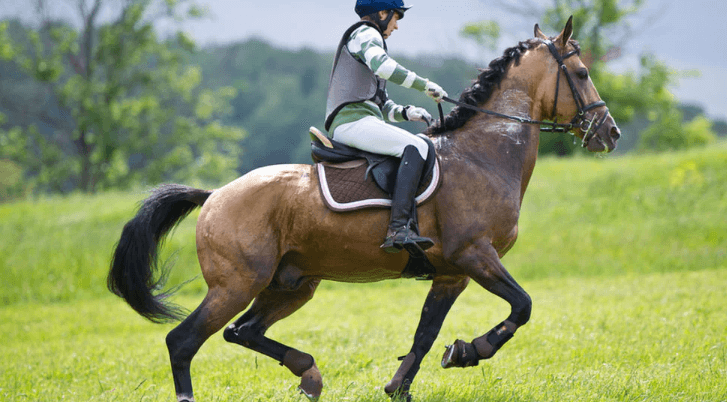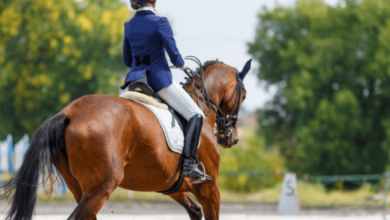How can riders and horses build stamina for endurance races?

Introduction
Endurance races test the limits of both riders and their horses, demanding peak physical condition, mental resilience, and a deep bond between horse and rider. Building stamina for these grueling events is essential for success and safety. In this comprehensive guide, we’ll explore the best practices, training regimes, and dietary strategies to enhance the endurance of both riders and horses.
Understanding Endurance Races
Endurance races vary widely in terms of distance, terrain, and conditions, but they all share a common requirement: exceptional stamina. Races can range from 25 miles to over 100 miles, often taking place over challenging terrains that test the endurance and resilience of both rider and horse. Understanding the specific demands of the race you’re preparing for is the first step in designing an effective training program.
The Physiology of Endurance Training
Endurance training impacts the cardiovascular, respiratory, and muscular systems of both riders and horses. For riders, it enhances cardiovascular efficiency, muscle endurance, and energy metabolism. For horses, it improves aerobic capacity, muscle fiber endurance, and overall stamina. Recognizing these physiological changes helps tailor training programs that maximize performance and minimize the risk of injury.
Importance of Stamina in Endurance Races
Stamina is the cornerstone of endurance racing. Without it, even the most skilled riders and well-trained horses will struggle to complete long-distance events. Stamina allows the rider to maintain control and focus while enabling the horse to sustain a steady pace and recover quickly from exertion. Building stamina requires consistent, progressive training and attention to both physical and mental conditioning.
Initial Assessment and Goal Setting
Before starting any training program, it’s essential to assess the current fitness levels of both rider and horse. This includes evaluating cardiovascular health, muscular strength, flexibility, and overall endurance. Setting realistic, incremental goals based on this assessment provides a roadmap for training and helps track progress over time.
Rider’s Physical Training Regimen
A well-rounded physical training regimen for riders should include cardiovascular exercises (such as running, cycling, or swimming) to boost aerobic capacity, strength training to enhance muscle endurance, and flexibility routines to improve range of motion. Incorporating activities like yoga or pilates can also help develop core strength and balance, which are crucial for maintaining control and stability during long rides.
Horse’s Physical Training Regimen
Horses require a comprehensive training program that includes cardiovascular conditioning (such as long, slow distance rides), strength training (like hill work or resistance exercises), and flexibility exercises to keep muscles supple and joints healthy. Progressive training that gradually increases in intensity and duration helps build stamina without risking injury.
Progressive Training Plans
Developing progressive training plans is key to building stamina. For riders, this might involve gradually increasing the duration and intensity of cardiovascular and strength training workouts. For horses, it means slowly increasing the distance and difficulty of training rides, ensuring they have adequate rest and recovery time between sessions.
Cross-Training Techniques
Cross-training can prevent overuse injuries and keep training interesting. For riders, incorporating activities like swimming, cycling, or hiking can provide cardiovascular benefits without the repetitive stress of riding. For horses, incorporating swimming or ground-based exercises can improve overall fitness and prevent monotony.
Nutrition for Riders
Proper nutrition fuels training and aids recovery. Riders should focus on a balanced diet rich in complex carbohydrates, lean proteins, healthy fats, and a variety of vitamins and minerals. Staying hydrated is crucial, especially during long training sessions, and electrolyte supplements can help maintain balance.
Nutrition for Horses
Feeding strategies for horses should provide adequate energy for training and recovery. A diet rich in forage, supplemented with grains and concentrates as needed, ensures they receive essential nutrients. Hydration is critical, particularly during long rides, and electrolyte supplementation can prevent dehydration and muscle fatigue.
Hydration Strategies During Training
Maintaining proper hydration is vital for both riders and horses. Dehydration can impair performance and lead to serious health issues. For riders, drinking water regularly and using sports drinks to replenish electrolytes is essential. For horses, providing access to clean water and offering electrolytes during and after rides helps maintain hydration levels.
Rest and Recovery
Rest and recovery are as important as training itself. Overtraining can lead to injuries and decreased performance. Riders should include rest days in their training schedules and use techniques like stretching, massage, and proper sleep to aid recovery. Horses also need rest periods to allow muscles to repair and grow stronger, and activities like walking or light trotting can promote recovery.
Mental Conditioning for Riders
Mental resilience is crucial for endurance racing. Riders can benefit from visualization exercises, mindfulness techniques, and goal-setting practices to enhance focus and mental toughness. Techniques like deep breathing and positive self-talk can help manage stress and maintain motivation during long races.
Mental Conditioning for Horses
Training horses for mental toughness involves desensitization and exposure to various stimuli to prevent spooking and stress during races. Building trust between rider and horse through consistent, positive training experiences can enhance their bond and improve performance.
Equipment and Gear
Choosing the right equipment is vital for comfort and performance. For riders, this includes selecting the right saddle, bridle, and protective gear. Ensuring that all gear fits well and is maintained properly can prevent injuries and enhance efficiency. For horses, proper hoof care and fitting shoes are critical, as well as ensuring their tack is comfortable and well-maintained.
Monitoring Progress
Tracking training progress helps identify strengths and areas for improvement. Riders can use fitness trackers, heart rate monitors, and GPS devices to monitor their workouts. For horses, regular veterinary check-ups and using technology like heart rate monitors can provide valuable insights into their fitness and recovery.
Common Training Mistakes
Avoiding common training mistakes can prevent setbacks. Overtraining is a frequent issue that can lead to injuries. It’s important to recognize signs of fatigue and adjust training accordingly. Consistency is key, but so is listening to the body and allowing adequate recovery time.
Weather and Environmental Considerations
Training in different weather conditions prepares both riders and horses for race day. Acclimating to various environments, such as hot, cold, or humid conditions, helps build resilience. It’s important to adjust training intensity and duration based on weather conditions to prevent heat stress or hypothermia.
Role of Veterinary Care
Regular veterinary care is essential for maintaining the health and performance of horses. This includes routine health checks, vaccinations, dental care, and addressing any health issues promptly. A good relationship with a knowledgeable veterinarian can make a significant difference in the overall well-being of the horse.
Incorporating Technology in Training
Using technology can enhance training efficiency and performance. Heart rate monitors, GPS tracking, and fitness apps provide valuable data that can be used to tailor training programs and track progress. These tools can help ensure that both rider and horse are training at optimal levels.
Building a Support Team
Having a support team can significantly impact success in endurance racing. This team may include trainers, veterinarians, nutritionists, and fellow riders. Each member plays a crucial role in providing guidance, care, and motivation, ensuring that both rider and horse are well-prepared and supported.
Preparing for Race Day
Preparation is key to a successful race day. This includes having a solid pre-race routine, ensuring all equipment is in good condition, and planning for contingencies. Mental preparation is equally important, as staying calm and focused can make a significant difference in performance.
Post-Race Recovery
Proper recovery after a race helps prevent injuries and aids in quicker recovery. For riders, this includes rest, hydration, and nutrition. For horses, it involves cooling down, providing water and electrolytes, and monitoring for any signs of injury or fatigue. Post-race veterinary check-ups can ensure that the horse recovers well.
Case Studies and Success Stories
Learning from the experiences of successful endurance racers can provide valuable insights. Case studies can highlight effective training strategies, common challenges, and how they were overcome. Success stories can also provide motivation and inspiration for both riders and horses.
FAQs on Building Stamina for Endurance Races
How can riders increase their cardiovascular endurance? Riders can increase cardiovascular endurance by incorporating activities like running, cycling, swimming, and high-intensity interval training (HIIT) into their training regimen. These exercises improve heart and lung capacity, which is crucial for maintaining stamina during long rides.
What are the best exercises for improving a horse’s stamina? The best exercises for improving a horse’s stamina include long, slow distance rides to build aerobic capacity, interval training to enhance cardiovascular endurance, and hill work to strengthen muscles and improve overall fitness. Consistency and gradual progression are key to avoiding injury and building stamina.
How important is diet in building stamina for riders and horses? Diet plays a crucial role in building stamina. Riders need a balanced diet rich in complex carbohydrates, proteins, and healthy fats to fuel their training and recovery. Horses require a diet high in quality forage, supplemented with grains and concentrates to meet their energy needs. Proper hydration and electrolyte balance are also essential for both.
What role does mental conditioning play in endurance races? Mental conditioning is vital for success in endurance races. For riders, techniques like visualization, mindfulness, and goal-setting help build mental resilience and focus. For horses, training that includes desensitization and exposure to various stimuli helps build confidence and reduces stress during races.
How can overtraining be avoided in endurance training? Overtraining can be avoided by incorporating rest days into training schedules, monitoring for signs of fatigue, and gradually increasing training intensity and duration. Listening to the body and making adjustments as needed is crucial. For horses, ensuring they have adequate rest and recovery time between intense training sessions is essential.
What are some effective recovery techniques post-race? Effective recovery techniques post-race include hydration, proper nutrition, rest, and stretching for riders. For horses, cooling down, providing water and electrolytes, monitoring for any signs of injury or fatigue, and scheduling a veterinary check-up are important. Massage and light exercise can also aid in recovery.
Conclusion
Building stamina for endurance races requires a comprehensive approach that includes physical training, proper nutrition, mental conditioning, and attention to rest and recovery. Both riders and horses need to be prepared physically and mentally to meet the demands of long-distance events. By following the strategies outlined in this guide, riders and horses can enhance their stamina, improve performance, and enjoy a successful endurance racing experience.





